By Mark Wittmer
Another men’s fashion season has come and gone, and with it a slew of new perspectives on the present and future of men’s and gender-fluid fashion. This season saw impressive runway spectacles, intimate reconsiderations of the meaning of the men’s wardrobe, a further separation of local and global outlooks, and, as always, plenty of exciting young talent.
Index
- Runway Spectacle
- A Return to Formality – and A Subversion of Formality
- National Milan vs. International Paris
- Ones to Watch
Runway Spectacle

Like all seasons in the social-media age, Spring 2024 had its Instagrammable runway moments and A-List (not to mention K-list) celebrities. But the best examples were more than mere spectacle, and furthered the brand’s goals while deepening the impact of the collection itself.
Dior staged what was probably the most technically impressive show of the season. The setting’s long, futuristic hallway of steel and fluorescent lights seemed like any other show staging where the models would turn around the corner and walk down one by one – but instead, through a feat of engineering, they slowly rose up from the floor all at once.
In addition to being a visual spectacle, this staging conceit also was a window into the cohesion and colorful rhythm of the collection, which updated Dior icons for the homme moderne.
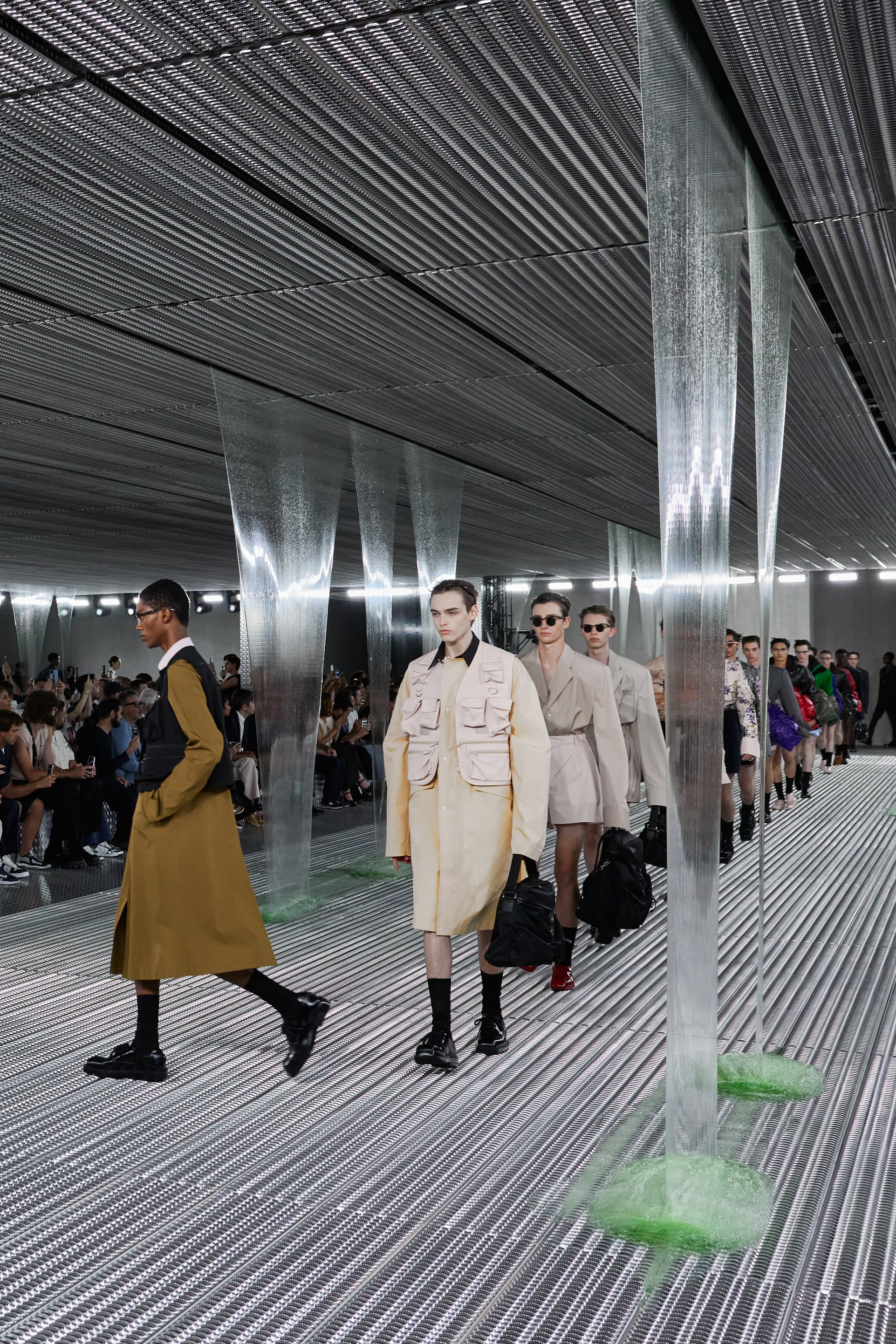
Similarly futuristic but even sexier was Prada’s show production, which set cascading walls of membranous slime to Nine Inch Nails’ darkly throbbing industrial dance classic “Closer,” with its iconic chorus (“I wanna fuck you like an animal, I wanna feel you from the inside”) in a way contrasting with the sophistication of design, but also somehow totally working with the collection’s consideration for the body’s movement.
This play between rigid architecture and sensual fluidity was at the core of Raf Simons’ and Miuccia Prada’s vision for the season. And it Oozed its way into the themes at the heart of Milan Men’s.
Dsquared2 took things in a very different direction, matching its Y2K touches and 80s Miami inspiration with a show that harked back to the bombastic spectacle and sensual glamor of that era’s runways, complete with supermodels and porn stars.
A Return to Formality – and A Subversion of Formality
Something that gets talked about every menswear season is the pendulum swing away from loose streetwear casualness and back towards tailoring and sartorial sophistication. While this was again a major theme for this season, the most exciting examples reconsidered tailoring tradition to subvert masculinity.

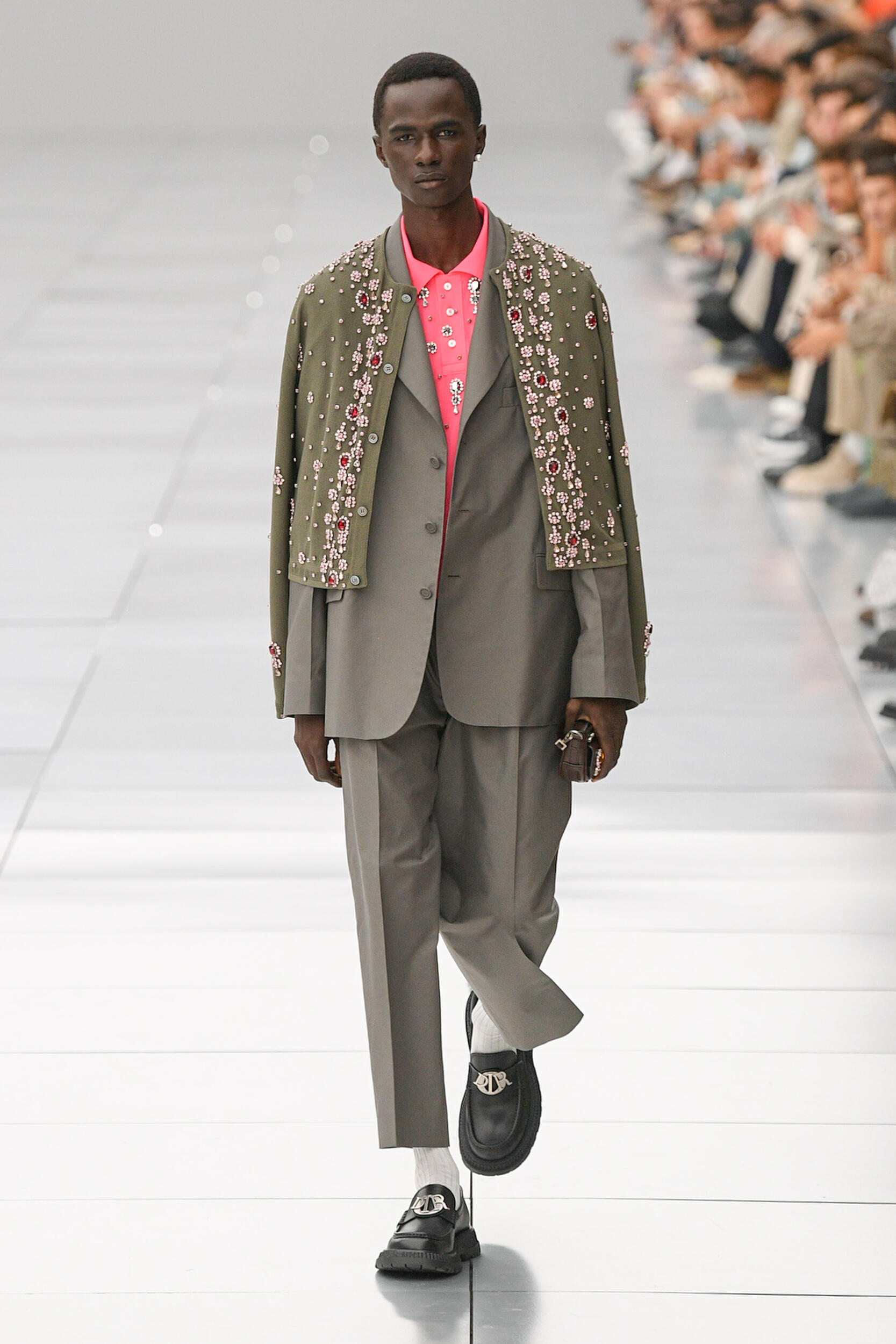

Dior and Dolce & Gabbana both dug into their archives to deliver subtly tweaked takes on classic tailoring moments.
But tailoring reached artful new heights in the hands of designers who fractured its typical constructions and social connotations.
Sacai’s Chitose Abe deployed her mastery of hybridity to combine formal suiting and workwear (including another Carhartt collab), forcing a reflection on how our perceptions of dressing are inherently connected to material conditions and class divisions. At Loewe, Jonathan Anderson elongated and tightened silhouettes to create a play of distance and perspective. Louis Gabriel Nouchi and Lagos Space Programme rewrote masculine codes to explore the concept of clothing as queer archive.
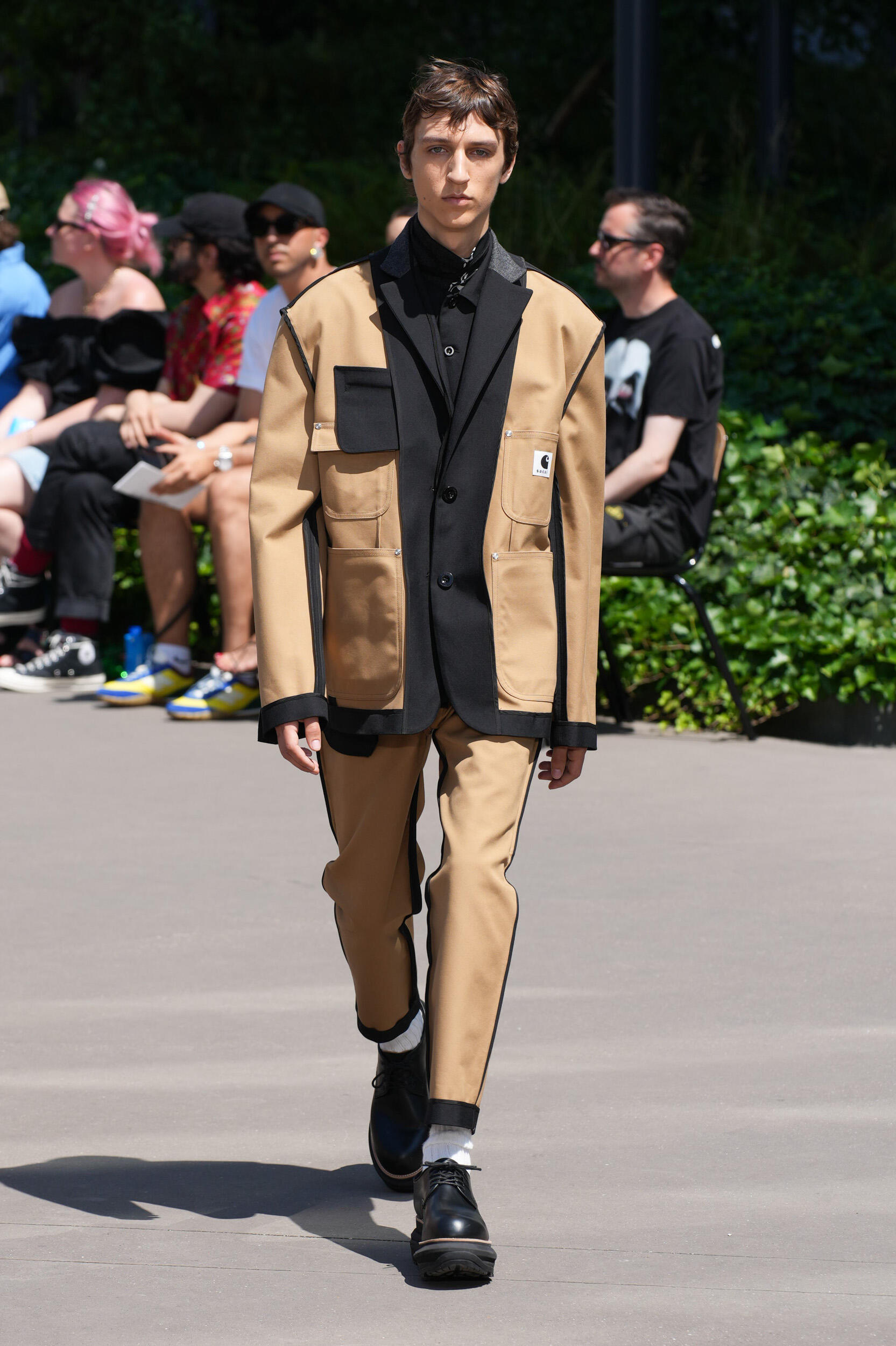

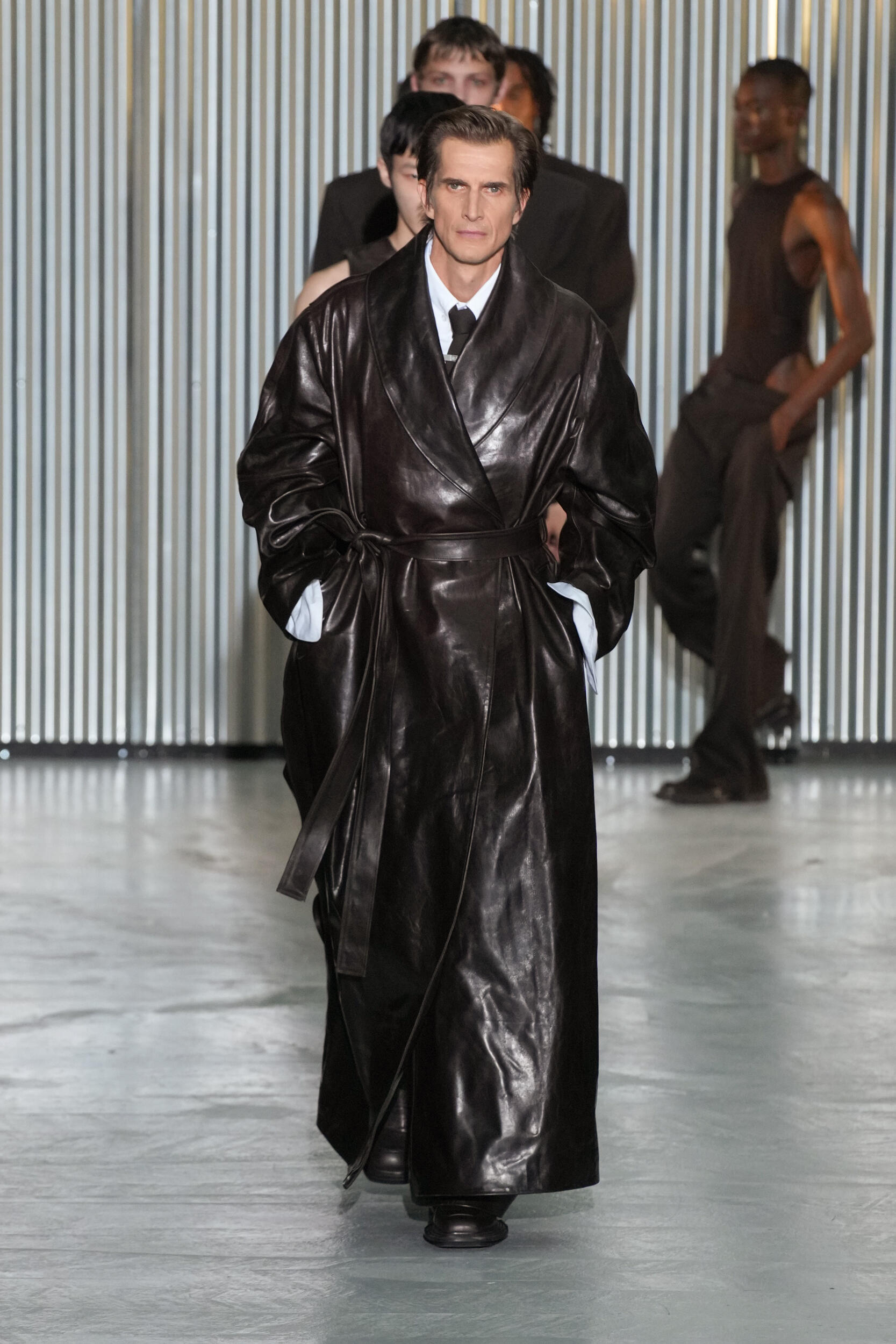
Uniting long in-house practices of craft and tailoring with a flirty embrace of fluidity and shifting menswear dress codes, Hermès, Prada, and Fendi set the tone for short shorts being a summer men’s must-have – finally!
National Milan vs. International Paris
Particularly coming into focus this season was menswear’s tale of two cities. On the one hand is Milan, which tends to feel quieter, and is dominated by Italian brands. Then following it the next week like a chaotic older cousin is Paris, which has a broader scope that encompasses the international and the avant-garde along with its local heritage brands.
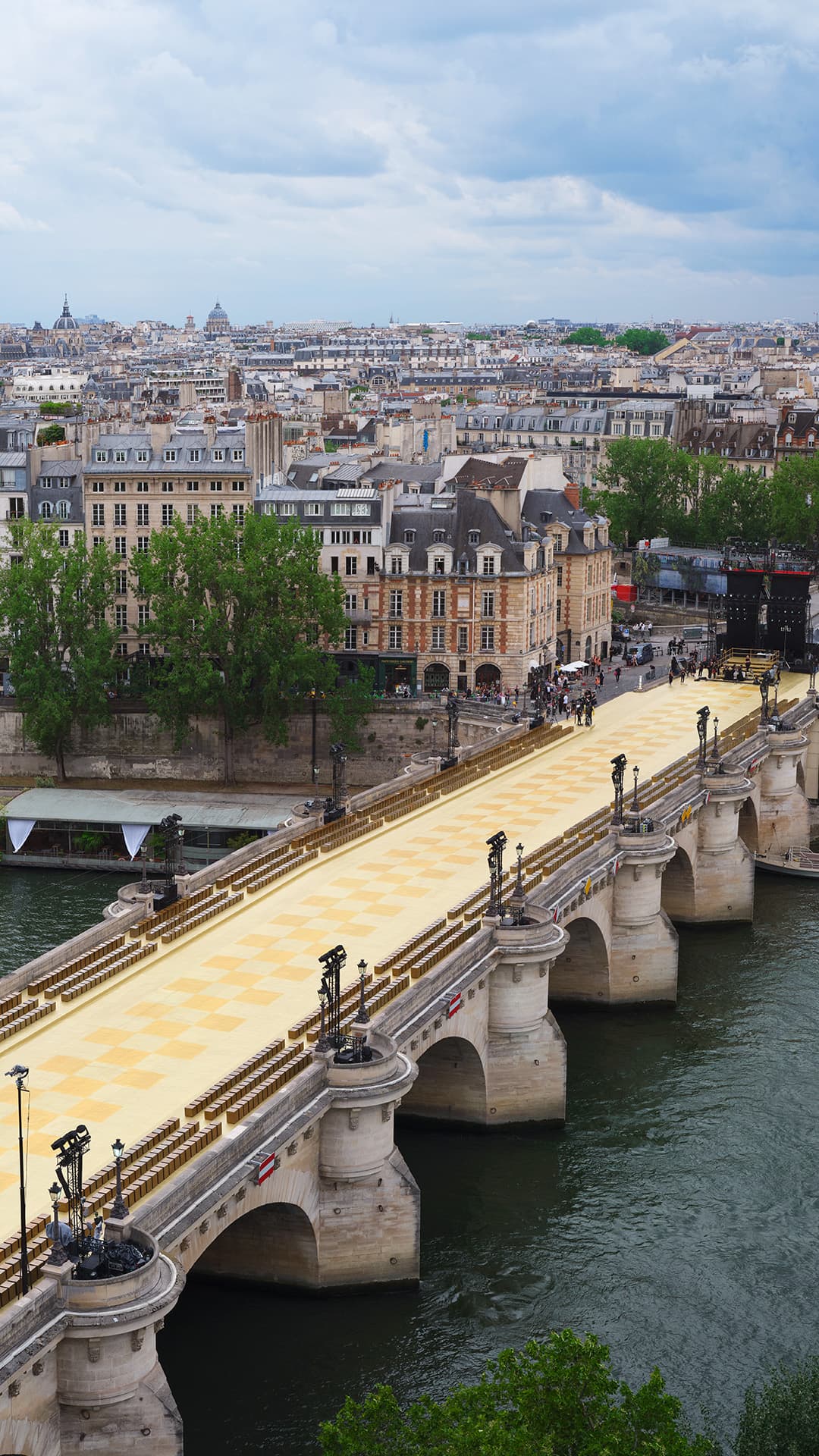
In Milan, just a few non-Italian brands like British designers JW Anderson and newcomer Charles Jeffrey Loverboy and Seoul-based Andersson Bell have spots on a calendar largely dominated by Italian names, whether young brands or long-established heritage houses.
Meanwhile, Paris’ international outlook only continues to grow.
What has already long been the home for forward-thinking Japanese designers like Yohji Yamamoto, Comme des Garçons, Mihara Yasuhiro, Sacai, Kolor, Belgian designers like Dries Van Noten and Walter Van Beirendonck, Korean brands like Songzio, Wooyoungmi, and Juun.J, and of course the iconic American in Paris Rick Owens has continually bolstered its roster with incoming international additions, while continuing to foster young French talent.
Ones to Watch

If we have the patience to sift through the corporate spectacle, each fashion week offers a look at the young talent whose unique design voices are cutting through the noise and revitalizing what is exciting about fashion, with the cooler, more low-key nature of the men’s weeks especially giving us a wider window into the exciting new perspectives that are coming into their own.
In Milan, Magliano followed up its win of LVMH’s Karl Lagerfeld Prize with a moving collection that infused an eclectic vintage wardrobe with soulfulness and imaginative details to create a unique kind of sartorial storytelling. With its second show from the Italian capital, Charles Jeffrey Loverboy delivered a psychedelic romp through fantasy and play, while Jordanluca defied recession fears with indulgence and danger.

Speaking of the LVMH prize, this year’s winner Satoshi Kuwata and his brand Setchu (which was one of the somewhat lesser known of the nominees) did not disappoint with his latest collection that continued his gender-fluid and impeccably constructed synthesis of classic tailoring, traditional Japanese references, and a cutting-edge spirit – and neither did fellow nominee Burç Akyol’s surprisingly sophisticated outing.
One of the few African fashion brands and designers that has been awarded global recognition, Lagos Space Programme has drawn a lot of eyes since it recently won the top honor at this year’s International Woolmark Prize. The brand’s presentation in Paris fused the use of traditional Nigerian indigo dye techniques with sculpture and gender-fluid tailoring embodied an intimate perspective on Afrofuturism.
